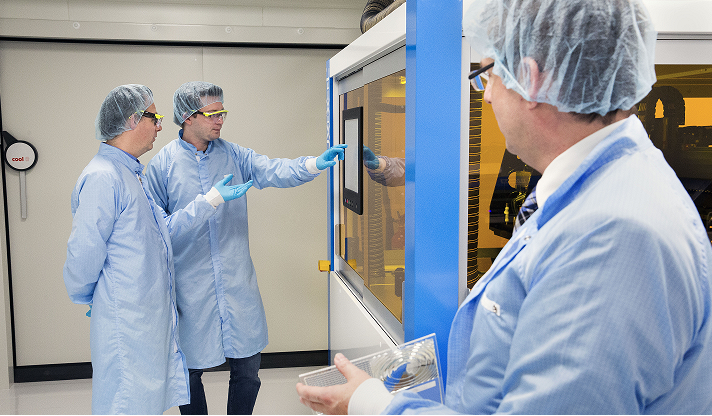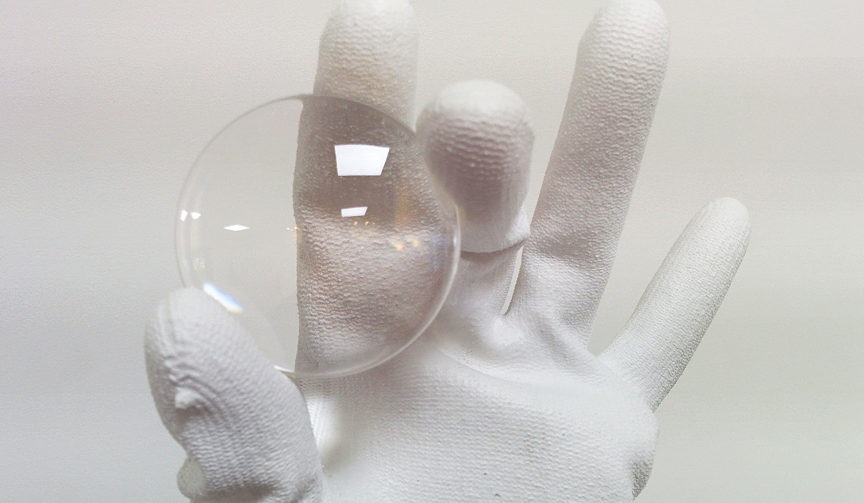3D Printed Lenses: Luxexcel Teams Up with Automation & Robotics to Implement New Quality Control Product, Dual LensMapper
 You might be quite surprised to find out how often the worlds of 3D printing and optics collide, bringing forth new innovations from an industry dedicated to lenses and light. And Luxexcel NV is a fast-growing 3D printing company that often seems to be in the midst of these new products.
You might be quite surprised to find out how often the worlds of 3D printing and optics collide, bringing forth new innovations from an industry dedicated to lenses and light. And Luxexcel NV is a fast-growing 3D printing company that often seems to be in the midst of these new products.
Founded in 2009 and described as the ‘only company worldwide that is able to 3D print optically functional products, without the need for polishing or grinding’, Luxexcel has been responsible for numerous strides in 3D printing, as well as for creating dynamic partnerships with other companies, helping to further mass customization within their industry as they focus on 3D printing lenses. Luxexcel started out initially just 3D printing optics for illumination applications, quickly discovering that the highly accurate technology would allow them to rapidly print fully transparent materials with smooth surfaces without any polishing or grinding at all.
With headquarters in the Netherlands as well as Belgium, the Luxexcel team has now reached the point, as have numerous other companies within the 3D printing space, where they realize they need to begin establishing greater quality assurance practices. With this in mind, they have teamed up with Automation and Robotics (A&R), also from Belgium, as they work on instituting a quality control program.
As Luxexcel collaborates with the leading manufacturer of high-tech measurement equipment for optical labs, the goal is to offer a new program within their company that allows them to make sure their 3D printed lenses are up to the quality they expect, and tested before use. They will be implementing a new quality control program that uses Dual LensMapper, a product made by A&R.
“Together with A&R Automation and Robotics we have now started a quality control program which will allow us to assure that our 3D printed lenses will meet both industry and user requirements,” said Guido Groet, CMO of Luxexcel. “Our continuous development efforts will bring us to imaging quality and we expect to be ready for certain applications in the course of 2017. The Dual LensMapper allows us to inspect the lenses in detail and take our quality control to the next level.”
While 3D printing has emerged as a technology that goes far beyond just the engineering realm, making impacts in medical, automotive, aerospace, and even industries like fashion and jewelry, we see it also offering great benefits to more specialized sectors such as optics—especially because of the customization factor. The technology actually allows for simplification in manufacturing processes while expanding the choices in frame shapes and designs. Not only that, the environmental footprint is significantly reduced when compared to the lens industry as it stands traditionally.
With this new quality control program in place, Luxexcel is able to offer a comprehensive, quality product, as well as continuing to act as a forerunner in both optics and 3D printing.
“The accurate and high resolution optical power error map provided by the Dual LensMapper evaluates the ability of the digital 3D manufacturing method to replicate the expected theoretical design,” said Dr. Christian Laurent, R&D director at A&R. “In parallel, it is possible to demonstrate that this ‘through’ power error is related to the lens thickness local variations, the most important aspect of the additive manufacturing process to be controlled for providing good quality lenses.”
A&R is known as a leader in both ophthalmic lens positioning and quality control, providing measurement systems such as Focovision and Dual LensMapper. With their lens quality and real time manufacturing process evaluation tools, they are a great choice for collaborating with other Industry 4.0 lens manufacturers seeking quality products at lower cost.
Discuss further over in the Luxexcel 3D Printing Quality Control forum at 3DPB.com.
Subscribe to Our Email Newsletter
Stay up-to-date on all the latest news from the 3D printing industry and receive information and offers from third party vendors.
You May Also Like
Nylon 3D Printed Parts Made More Functional with Coatings & Colors
Parts 3D printed from polyamide (PA, Nylon) 12 using powder bed fusion (PBF) are a mainstay in the additive manufacturing (AM) industry. While post-finishing processes have improved the porosity of...
3DPOD Episode 193: Flow and What’s Possible in 3D Printing with Ricky Wildman, University of Nottingham
Ricky Wildman is working on 3D printing pills, but, as Professor of Multiphase Flow and Physics at Nottingham, he does a whole lot more. His research encompasses the characterization of...
3D Printing Webinar and Event Roundup: March 17, 2024
It’s another busy week of webinars and events, including SALMED 2024 and AM Forum in Berlin. Stratasys continues its in-person training and is offering two webinars, ASTM is holding a...
3D Printed Micro Antenna is 15% Smaller and 6X Lighter
Horizon Microtechnologies has achieved success in creating a high-frequency D-Band horn antenna through micro 3D printing. However, this achievement did not rely solely on 3D printing; it involved a combination...































